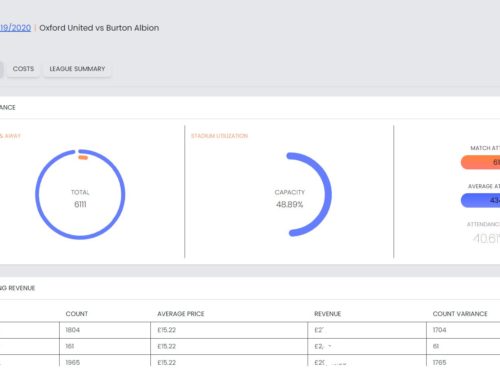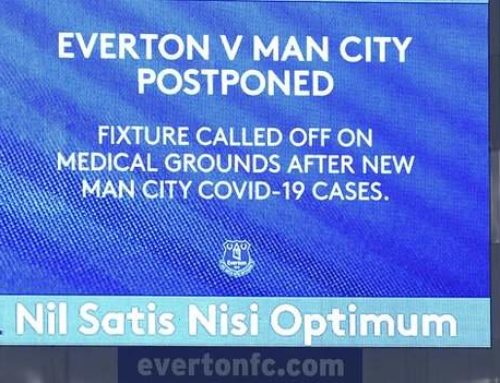BLOG | BY DIRECTOR DR JOSEPH COOPER
We are in unprecedented times at the moment. The impact COVID-19 has had on the football industry is colossal and has affected clubs up and down the league system, all the way to our grassroot clubs.
Many people will claim that COVID-19 has crippled clubs, forcing them into a financial situation that is impossible to navigate. In reality, the virus is merely exposing many of the prevalent issues with finance in football.
Personally, I am a huge fan of the game. I’ve supported my home town club (Shrewsbury Town FC if you’re interested) for as long as I can remember and have seen them through many ups and downs over the years. The club means so much to me, and now I fear that they, along with many others, may be in serious trouble.
We are now heading into a period where the finances of these clubs are more brittle than ever – guidance is needed now more than it ever has before..
This is one of the reasons why I am passionate about what we are doing at ClubView. We are trying to steer the finances of football clubs so that they can mitigate any financial troubles that they could experience, with better governance, forecasting and predictions.
This problem is not exactly new. The ClubView product is ready to launch now because it was already in development long before COVID-19.
One of the key mantras of ClubView is to empower the football world with insights and analysis on finance. This is where I come in as a data scientist.
I am using the finances of a football club to help make predictions on the club’s financial performance, as well as provide insights that could enable the club to build towards profitability. We work collaboratively with Leagues, which will give us access to a lot of data – and we can analyse this to help clubs collectively, whilst helping the Leagues to govern and support their clubs whatever challenges lay ahead.
Data science itself has already had a profound impact on professional industries. It has changed the way many businesses are run, by introducing in depth analysis and machine learning to large datasets. This can easily be seen in everyday life, from recommendations that companies make when you visit their website, to helping identify better drug treatments for patients. You can see just from my examples that there are some amazing ways in which data science is being applied.
At ClubView, we are aware of how fine the line is, especially as we are dealing with finances, one of the most corruptible elements. This is why it is so important for us to treat football data ethically and responsibly. From our perspective clubs will always have the power to opt in and out of sharing data with each other and the potential predictions that can be made through the ClubView AI models.
There are many ways in which data science is currently being used in the football world, some of it fascinating. There are algorithms that attempt to predict the outcomes of matches, or the performance of the club over a season. There are algorithms that try and predict player performance, so that clubs can buy the best players or the ones with the most potential. There have even been recent studies into where best to pass the ball based on a players position on the pitch. These algorithms are focused heavily on the result of a match and improving that result. This is not what ClubView is focusing on, we are doing something newer and in many ways more important which is looking at how the club performs outside of a match.
The purpose of our algorithms are very different from those that other companies employ. Our goals are to prevent clubs from going into administration, help them avoid penalties from financial fair play, and to empower the CEO and club owners to make more meaningful decisions for the club.
One of the foremost ways in which we currently do this is with long term and short term predictions. We do this for both the attendance of matches and the clubs revenue. We call this ClubView xR (Expected Revenue).
Before last season was curtailed in March, we were working with our pilot club in League 1 on an attendance prediction model. At the moment many clubs will use very basic methods to predict what the attendance for a club will be on a match by match basis, based on previous encounters.
However, we do this using the power of AI. Our AI algorithm uses information about the club, such as match results, form, pricing and weather as well as historical attendances to predict what the attendance of the match will be.
This is hugely important to a club as it will help them to better forecast based on how much income they will have over the year – and crucially when it will arrive. It also helps with some of the smaller things such as match day programmes and policing costs, which can make a big difference to a club by the end of the year. By predicting the attendance for the game we also help to predict what the revenue for the game will be, and how the factors in our dataset could affect that – some in the club’s control and some not.
Of course in the current times, it’s sadly not hard to predict the attendance of matches, given the lack of spectators! So we have spent the period investigating social sentiment towards clubs, and how this can affect a whole range of revenue streams. Our agile culture means we can adapt quickly to the industry needs, and will continue to do so whilst the needs are continuing to change so regularly.
More than anything, our aim is to help football clubs. This has always been the goal from the start for ClubView. We came together as experienced experts in our fields who wanted to make a difference to football.
By collaborating with Leagues, we can use the data very specifically to help clubs.
We don’t want more clubs going into administration, we don’t want any more clubs accidentally breaking financial fair play. We want clubs to be sustainable and fair so that the beautiful game can continue long into the future.





